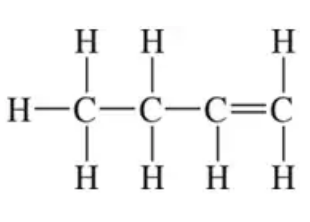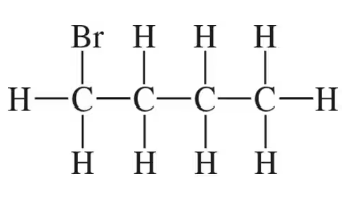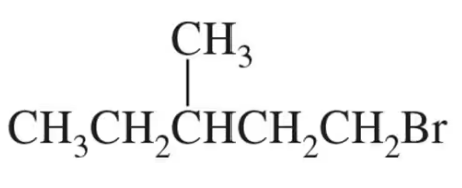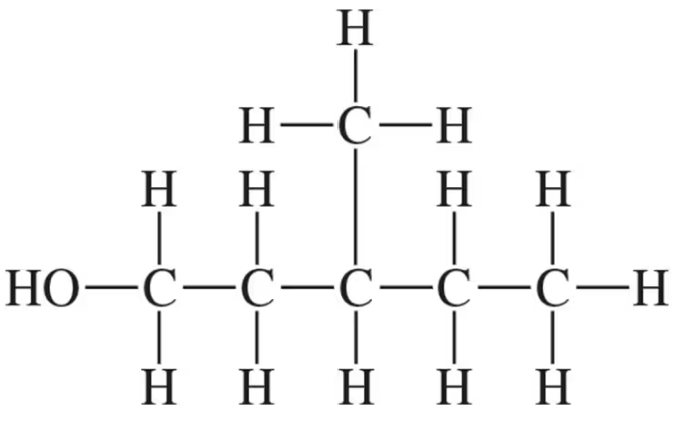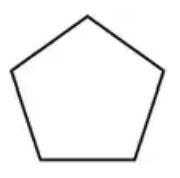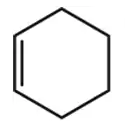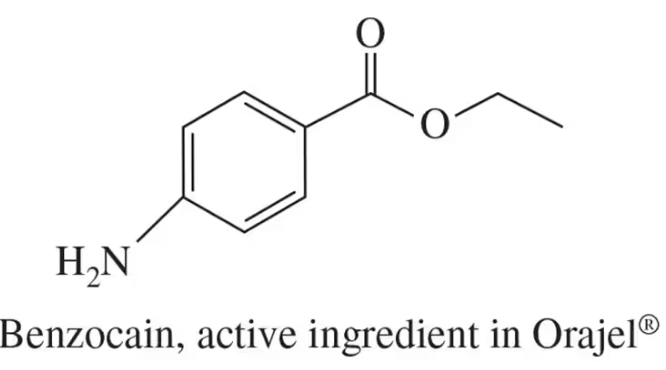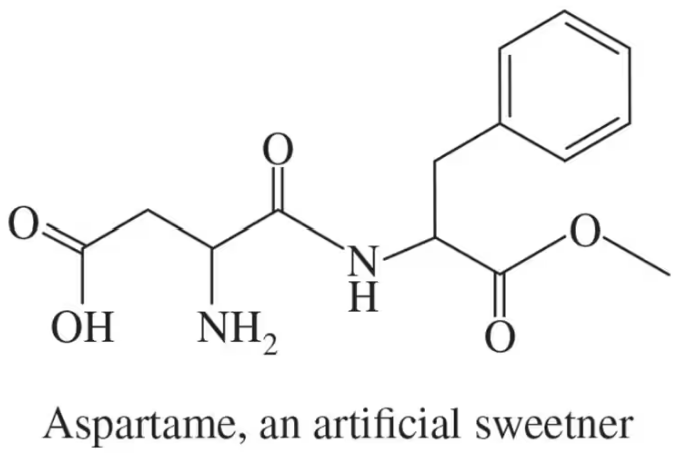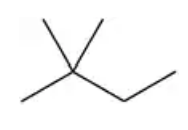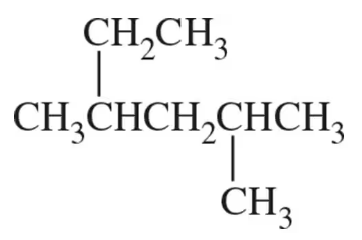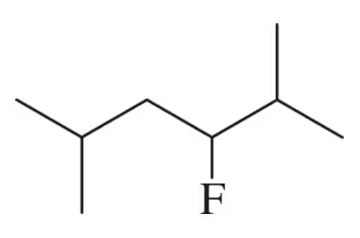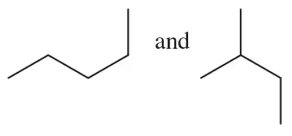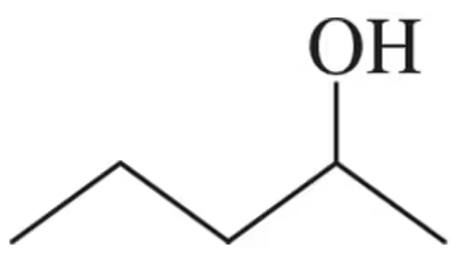 Back
BackProblem 1
Describe the difference between a Lewis structure and a condensed structure in terms of atoms and bonds shown in the structures.
Problem 3
Explain why it is not possible to draw a skeletal structure for methane.
Problem 5b
Draw a skeletal structure for each of the following compounds:
(b)
Problem 6b
Draw a skeletal structure for each of the following compounds:
(b)
Problem 8b
Draw a Lewis structure for each of the following compounds:
(b)
Problem 9b
Draw a condensed structure for each of the following compounds:
(b)
Problem 11b
Name the straight-chain alkanes or cycloalkanes whose structure or formula is shown:
(b) C6H12
Problem 12b
Name the straight-chain alkanes or cycloalkanes whose structure or formula is shown:
(b)
Problem 13b
Write the condensed structure for the straight-chain alkanes shown:
(b) methane
Problem 14c
Write the condensed structure for the straight-chain alkanes shown:
(c) hexane
Problem 15c
Write the skeletal structure for the alkane or cycloalkane shown:
(c) CH3CH2CH2CH2CH2CH2CH2CH3
Problem 17a
Identify the family of hydrocarbon present in the following:
(a) H3CC≡CH
Problem 17c
Identify the family of hydrocarbon present in the following:
(c)
Problem 18a
Identify the family of hydrocarbon present in the following:
(a) CH3CH2CH=CH2
Problem 19a
Identify all the functional groups present in the following:
(a)
Problem 20a
Identify all the functional groups present in the following:
(a)
Problem 21
The most prevalent fatty acid in coconut oil is lauric acid, a saturated fatty acid containing 12 carbons. Draw lauric acid in skeletal structure.
Problem 23b
Draw the condensed structural formula for each of the following alkyl groups:
(b) methyl
Problem 24c
Give the correct name for each of the following substituents:
(c) I―
Problem 25a
Draw the skeletal structure for each of the following compounds:
(a) 2,3-dimethylpentane
Problem 26a
Draw the skeletal structure for each of the following compounds:
(a) 3-ethylhexane
Problem 27a
Give the correct IUPAC name for each of the following compounds:
(a)
Problem 27c
Give the correct IUPAC name for each of the following compounds:
(c)
Problem 28b
Give the correct IUPAC name for each of the following compounds:
(b)
Problem 29
What is the difference between a conformational isomer of a compound and a structural isomer of the same compound?
Problem 31b
Determine the relationship between each of the pairs of the following compounds. Are they structural isomers (different molecules), conformational isomers (the same molecule), or not related?
(b)
Problem 32a
Determine the relationship between each of the pairs of the following compounds. Are they structural isomers (different molecules), conformational isomers (the same molecule), or not related?
(a)
Problem 32d
Determine the relationship between each of the pairs of the following compounds. Are they structural isomers (different molecules), conformational isomers (the same molecule), or not related?
(d)
Problem 33b
Determine if each of the following cycloalkanes or alkenes can exist as cis–trans stereoisomers. For those that can, draw the two isomers. Label each of the isomers you drew as the cis stereoisomer or the trans stereoisomer.
(b) CH3CH2CH2CH2CH=CH2
Problem 35a
Mark the chiral centers in the following molecules, if any, with an asterisk (*):
(a)

